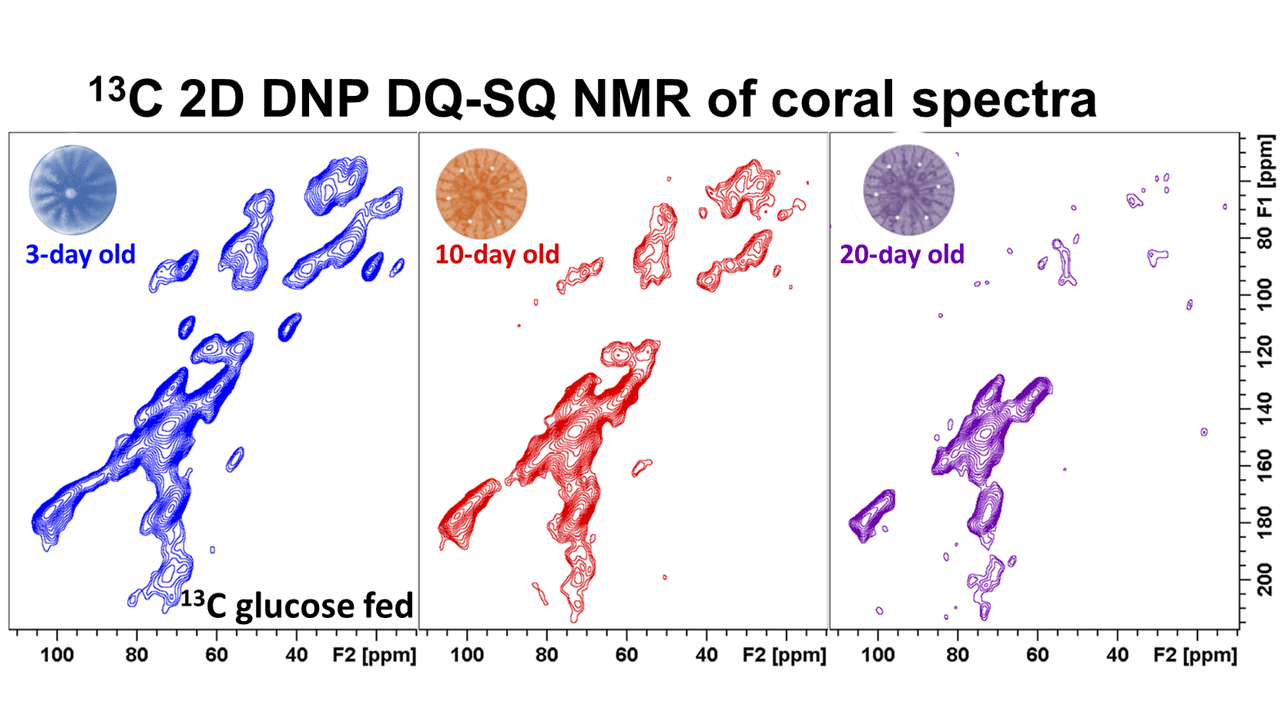
Invited
DNP-enhanced NMR of baby corals undergoing metamorphosis from swimming to grounded indicate skeleton materials synthesis and changes to organic materials accompanying the transformation
2Institute of Complex Systems, Julich Research Institute, Julich, Germany
3Marine Biology, Haifa University, Haifa, Israel
The ability of corals to maintain homeostasis and mineralize has been compromised by ocean acidification and temperature rise causing reefs to recede and even vanish. Early in their life, corals undergo transformation from a swimming organism (planula) to a static one, adhering to ocean bottom (polyp) and forming exoskeleton for protection. The skeleton material is comprised of aragonite and other calcium carbonate materials encapsulating minor organic material. It is beginning to be laid down at this crucial time in the life of the coral and it is therefore essential to understand the chemical processes that dictate its proper formation.
Recently[1], we have shown using 13C MAS NMR on whole 13C-labeled baby Stylophora pistillata corals that mineralization starts before the coral settles. We also found using 2D 13C DARR that Glu-rich proteins bind soft amorphous mineral in the planula and Asp-rich proteins bind aragonite crystals in the polyp. Regulation of the two mineral states by the disparate proteins suited well the needs of the coral changing from motile to sessile.
Here, we expand investigations of the metamorphosis using DNP-enhanced MAS NMR measurements, obtaining favorable signal enhancements of about 16- to 48-fold. With the improved sensitivity, we identify a minor phase of calcite has been identified in the center of calcification in adult corals. Using 2D 13C DQ-SQ and PDSD measurements on the intact corals, labeled either via 13C carbonate/glycine or via 13C6 glucose/glycine, we follow the changes in organic level production related to the transformation and the onset of aragonite precipitation. We highlight cross-organism contribution of symbiotic dynoflagellates to the organic matrix content via carbonate metabolism by using the latter as a food source.
These changes are highlight transitions occurring with colonization and expedited mineralization initiated before motile functions are abandoned by the stony coral stylophora Pistillata.
[1] Akiva, A. et al, Nat. Commun. (2018) 9, 1880

Powered by Eventact EMS